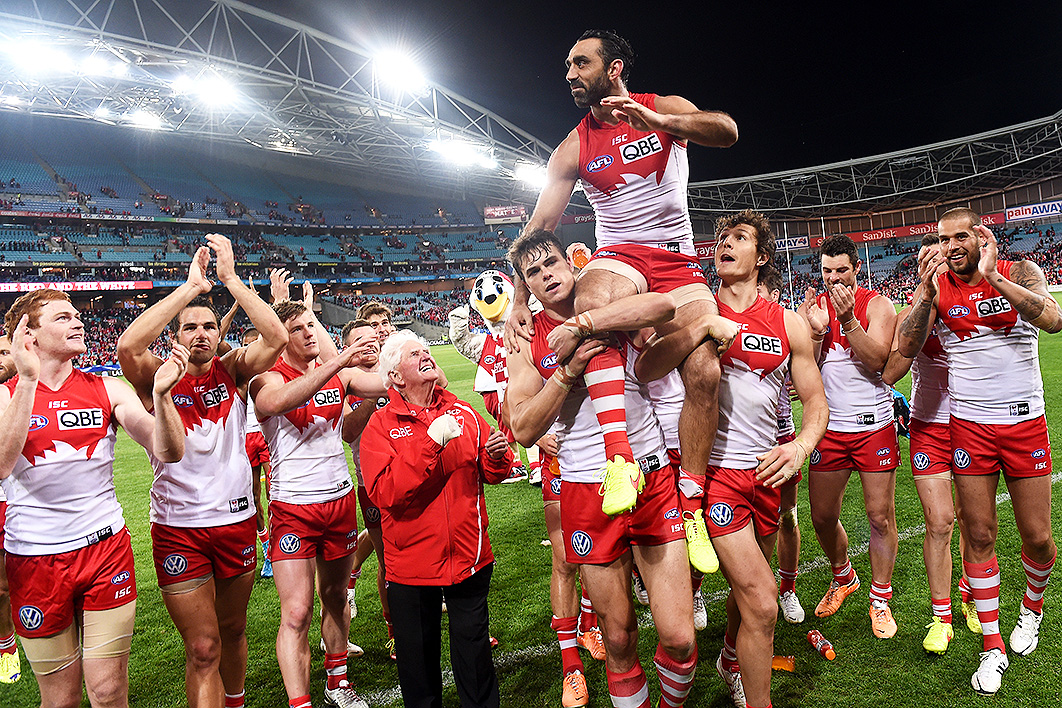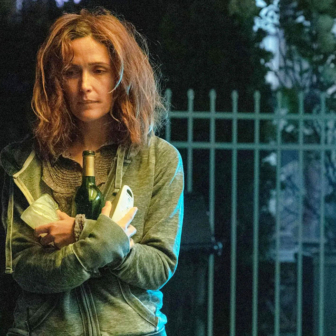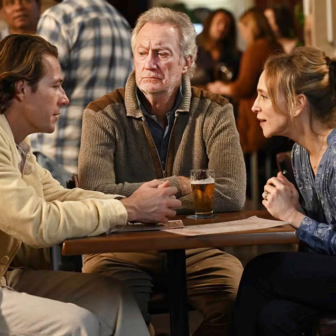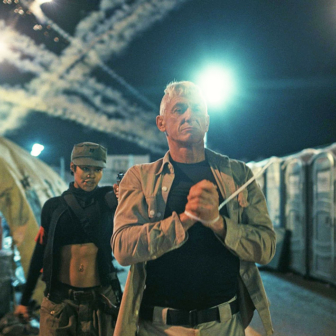A friend recently described seeing the very young Diego Maradona score a goal in Buenos Aires La Bombonera stadium in the 1980s. “He came from a long way back,” she said. “He just kept running and dribbling and no one could stop him. It was incredible. It was like watching a dream.” But, she added, “the crowd roared so much I became frightened.”
That was a forerunner of Maradona’s great goal against England in the World Cup quarter final in 1986. It’s a goal that had a veteran Argentine football commentator down on his knees weeping and thanking God, and it’s caught in all its glory in the new documentary Diego Maradona, along with the notorious “hand of God” goal that preceded it. Only years later did Maradona admit his hand touched that ball. At the time he attributed it to the almighty.
Football is tribal. Football is warfare by other means. And so, naturally enough, the crowd plays a big role in this documentary, now in cinemas, and another new football documentary, Ian Darling’s The Final Quarter, streaming on Ten, which documents the racist persecution of Adam Goodes. Commentators appear, often post hoc, and fan the flames of opinion, but the crowd is there. It is always there, whether it’s silent, murmuring, singing, shouting, hissing, booing. When does it become a mob?
Asif Kapadia’s film gives us Maradona as both angel and devil. The kid from the Buenos Aires slum who supported his family from the age of fifteen and married his childhood sweetheart. The kid who used his remarkable skill to give grief to the powerful. The kid who cheated, lied, used cocaine and women supplied by the Camorra, and denied paternity of a son born to a girlfriend in Naples just before he married his Argentine fiancée.
Kapadia is an excellent dramatist. As with his previous documentaries — about the Formula One driver Ayrton Senna and the British singer Amy Winehouse — he uses mostly found footage. His tragic trilogy, he calls the three films. This time he has a living subject, and there are a few passages of material gleaned from interviews.
By focusing on Maradona’s six years in Naples, Kapadia cranks up the drama. Maradona and Naples seemed made for each other. When it bought Maradona, in 1984, SSC Napoli was barely clinging to a slot in Serie A, which was dominated by Juventus and Milan from the wealthy north. In Italy, as in Argentina, class and race prejudice are intertwined. The north spurns the south. Northern fans regularly denigrate Napoli players and supporters as unwashed, cholera-carrying peasants.
The small, wily Maradona, who had copped a few racist slurs in Argentina and Barcelona — “the shitty little black kid from the slums” was one, from an admirer — was given a hero’s welcome in the San Paolo stadium in Naples by 75,000 fans. From the start, it is the ebullience, the surging emotions of the crowd, that lifts this film.
Kapadia’s focus is the divided persona of the tragic hero. The seesaw between Maradona the angel and Maradona the devil serves his narrative well. But there is a third actor in the drama.
The turning point was the 1990 World Cup match between Argentina and Italy, in which Maradona played for his home country. Italy was hosting the cup, and most games were played in Rome. Trainer Fernando Signorini points to FIFA’s stupidity in placing this match in Naples. Asked whom the local fans should support, Maradona prevaricated, then said that Neapolitans “weren’t really Italians.”
The reaction was sullen, but when Argentina beat Italy on a penalty shootout goal taken by Maradona, the mob turned. That night, someone heaved a brick through the window of his house.
For six years, Maradona had been a kind of luxury status symbol for a Camorra clan, the Giulianos, who controlled the Naples district of Forcella. Now he became an embarrassment. Without their protection the law moved in. He was wire-tapped, arrested, disgraced.
His bloated decline is well known. Kapadia shows us sad footage of him coaching children. He may still be admired and supported in Argentina, but he was never able to rebuild his career.
Like Kapadia’s much more substantial film, The Final Quarter is a compilation of existing footage. It drew repeat screenings and became a talking point in June at the Sydney Film Festival. (Stan Grant has drawn on the same footage and coupled it with an interview with Goodes and Grant’s own “Australian Dream” speech for a documentary that opened the Melbourne International Film Festival last week.)
Darling’s seventy-five-minute film doesn’t have quite the dramatic sweep of the Maradona movie, but the unbridled racism in some of the footage makes one want to rise from one’s seat and retch.
It is worth seeing, and thinking about, particularly for those who aren’t regular viewers of Sky News or The Footy Show. We may have read about the persecution of Goodes, but newspaper reports really don’t have the emotional force of footage of a gormless Eddie McGuire letting himself be bullied into endorsing an egregious set of remarks about Goodes and King Kong. Or puce-faced commentator Sam Newman proclaiming himself a proud white heterosexual male.
Goodes himself emerges from all this as a thoughtful, determined man who decided to use his Australian of the Year status in 2014 to speak out about Australia’s history of racial oppression: not in a spirit of recrimination but as a necessary step to reconciliation.
It is a psychological process many of us are finding painful. The predictable pile-on by the usual Sky commentariat followed his remarks. It’s all here in Darling’s documentary, compressed in a way that may indeed magnify the impact — though it may also downplay the slow seethe that poisons the mind and spirit.
The repeated collective booing from some AFL fans, which finally drove Goodes from the football field, is here and is ugly indeed. I would like to have seen some interrogation, by reporters on the spot, of individuals who joined this mass. Did they feel uplifted, exhilarated, justified? I guess many in the crowds at Nuremberg, or rallying for Mussolini must have gone home feeling uplifted — somehow vindicated joining their voices to others.
(If you think that comparison is far-fetched, consider this: one of the Fascists’ main propaganda posters at around the time American troops landed in Italy featured black American servicemen drawn as apes. Like the blood libel of the anti-Semites, the simian metaphor has a long history of attraction for white racists.)
On camera, Goodes comes out of this experience far better than Maradona did when he was forsaken by the crowd. Goodes is a thoughtful man and I am hopeful these scarring experiences have not broken him.
Now we all have work to do. But if there is a moment of grace in this film — though not quite a parallel to Maradona’s magic second goal in Mexico City — it is Goodes as he dances along one side of the field and mimes throwing a spear. It’s landed, Adam. It’s landed. •




